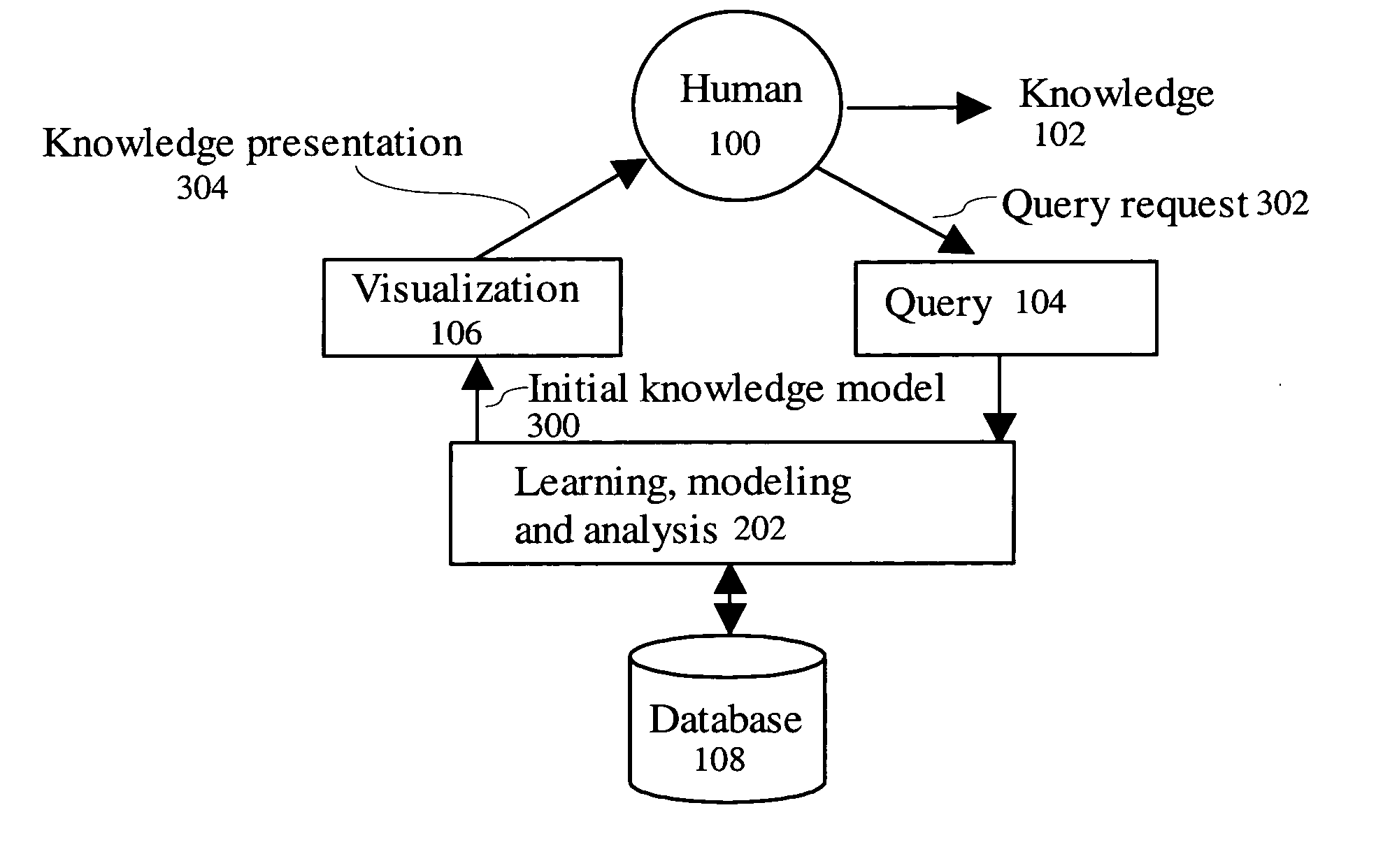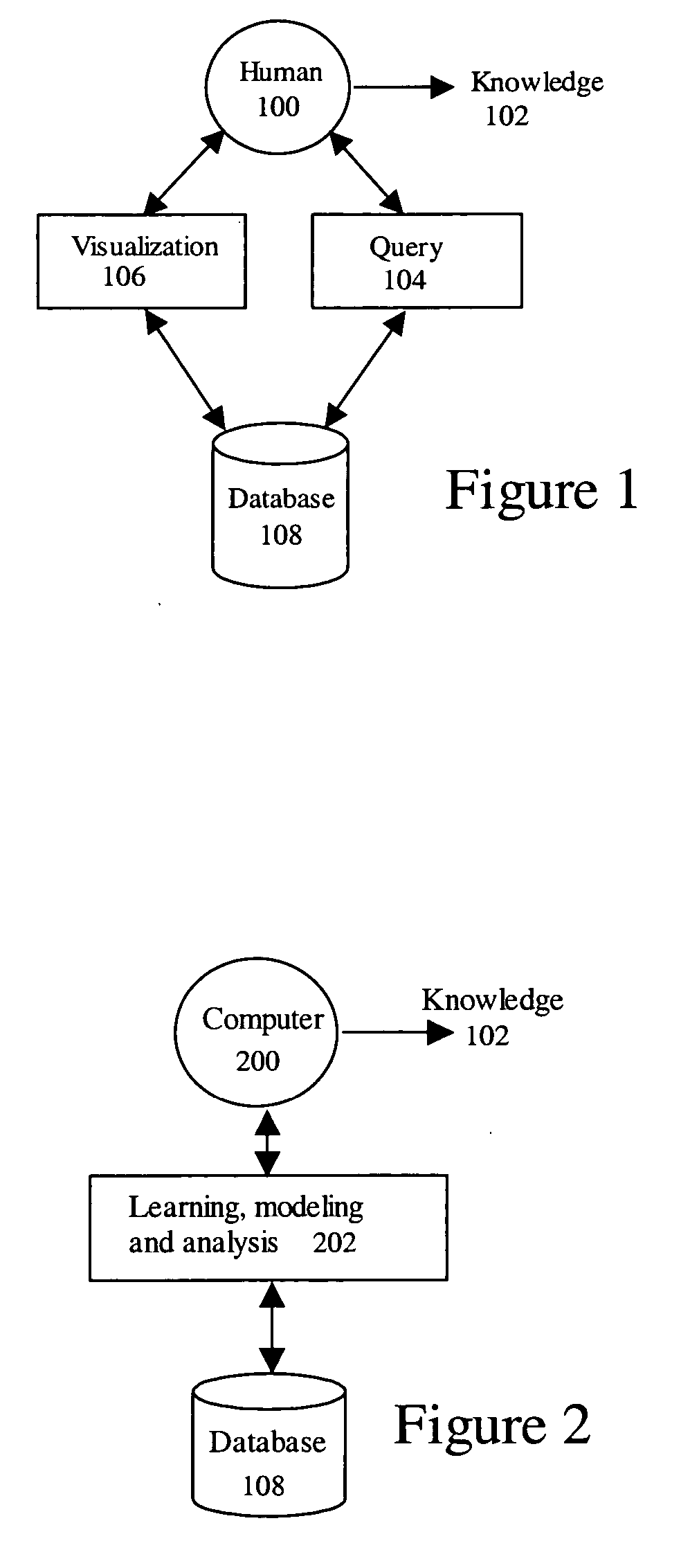Dynamic learning and knowledge representation for data mining
a dynamic learning and knowledge representation technology, applied in data mining, data processing applications, instruments, etc., can solve the problems of data becoming useless, database becoming data “dumps”, and inability to find valuable information and synthesize useful knowledge hidden in them, so as to achieve effective visualization and efficient confirmation or rejection of human hypotheses
- Summary
- Abstract
- Description
- Claims
- Application Information
AI Technical Summary
Benefits of technology
Problems solved by technology
Method used
Image
Examples
Embodiment Construction
[0026] I. Application Scenarios
[0027] Two data mining application scenarios are shown in FIG. 1 and FIG. 2. FIG. 1 shows the processing flow of a human dominated data mining process. As shown in FIG. 1, a human 100 queries a database 108 and the data are presented through a visualization component 106 that enhances the human's ability to comprehend the queried data. Through iterative application of query 104 and visualization 106, knowledge 102 is created by human 100 as the output of data mining.
[0028]FIG. 2 shows the processing flow of a computer dominated data mining process. As shown in FIG. 2, computer 200 accesses a database 108. It uses machine learning, modeling and analysis method 202 to automatically create knowledge 102 from the data.
[0029] The human dominated data mining process (FIG. 1) relies heavily on the human's ability to search the database, understand detailed meaning of feature attributes and ability to comprehend statistics and learning methods. This results...
PUM
 Login to View More
Login to View More Abstract
Description
Claims
Application Information
 Login to View More
Login to View More - R&D
- Intellectual Property
- Life Sciences
- Materials
- Tech Scout
- Unparalleled Data Quality
- Higher Quality Content
- 60% Fewer Hallucinations
Browse by: Latest US Patents, China's latest patents, Technical Efficacy Thesaurus, Application Domain, Technology Topic, Popular Technical Reports.
© 2025 PatSnap. All rights reserved.Legal|Privacy policy|Modern Slavery Act Transparency Statement|Sitemap|About US| Contact US: help@patsnap.com



